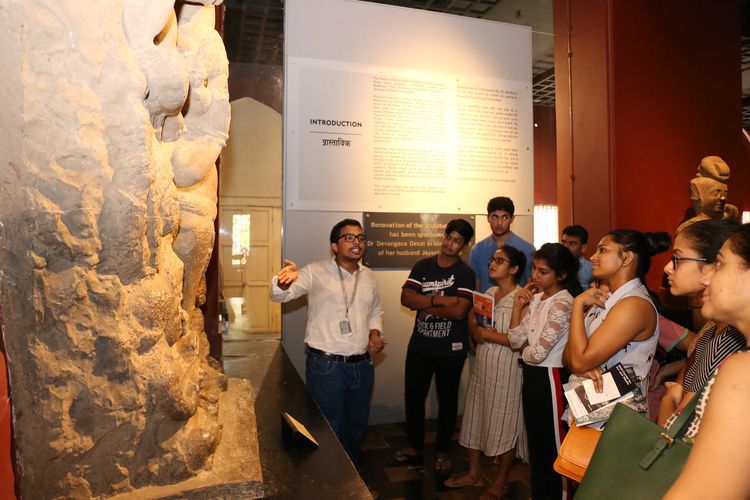
The derivation of the term museum accentuates a wide range of meanings and intricacies of subjects. Museums explicitly contain implications of cultural, sociological, historical, religious aspects of the society. They are not merely a repository of items but disseminate the collections through knowledge and information. In order to do so, museums have evolved over the ages and have transformed from studios to gallerias i.e. transformed from space of containment and privacy to openness and sociability. By opening up for the society, museums procured a much bigger responsibility that of an educator. From simply exhibiting objects to interpreting them and ultimately to stimulating visitor interpretation, the role of museums has evolved. However, the pedagogy adopted by the museums was not an authoritative one, but one based on experience. It went beyond any form of curriculum and has been ever evolving. In many ways, museums offer some of the most real learning experiences people ever encounter.
The evolution of museum pedagogy began from the Renaissance period and has extended up till the present. As museums have evolved, so have their education goals. The role of museums as mere educators of the past has shifted to museums becoming a prospect of discussions rather than one of exhibition. They have become contact zones that aim to inculcate greater degree of cross-cultural interaction amongst different communities within the limited museum space. The idea is to allow the visitors to have individual opinions and to perceive the connotation through multi-sensory factors. For doing so, museums have adopted various methodologies to enhance this multi-sensory experience for its visitors.
One of these strategies is systematic display of objects that is eye pleasing and thus creates a memory in minds of the people. The organized set up of objects in museums is pivotal in creating the memory that finally leads to learning through experience. The display of cultural properties in the museum plays a vital role in engaging the masses and instills curiosity in their minds. Museum didactics focus on dynamic teaching rather static one where objects are simply objects. A lot of museums have devised new techniques and have made installations wherein the visitors are free to interact with the objects. These installations include various technological advancements like- audio-visual reality gears, stereographic display, animatronics, hologram, flip books etc. Apart from the machineries, the museums have started organizing activities like treasure hunt, discovery rooms, workshops and camps for children to engage them with teaching through an informal approach.
Where the larger museums are adopting these new technologies and strategies, it is unfortunate that the smaller museums lay unnoticed and backward in comparison. It is pertinent for one to understand the importance of each museum because of its unique collections and not for the location or architectural advantage. Such museums offer numerous cultural nuances whose significance is still an understatement in the current scheme of things. This calls for an academic conglomeration, an institutional coalesce between small town museums and urban museums. It is needless to say that museum pedagogy will always be incomplete without accounting for cultural broadenings of these small museums. The need of the hour is also for education institutions to work in collaboration with museums. As per the constructivist theory, individuals augment ‘cognitive structures’ and that in order to learn, they must adapt or internalize their experiences. Individuals learn when they revise prevailing conceptual structures creating new links and assimilating firsthand concepts. The more links created, the more stable this new knowledge will be. Museums are apt environment for wholesome learning because it offers rich multi-sensory experiences. There is an intimate association between the visitors and perceivable tangible objects creating an impetus for modification in the personal sense of experience.